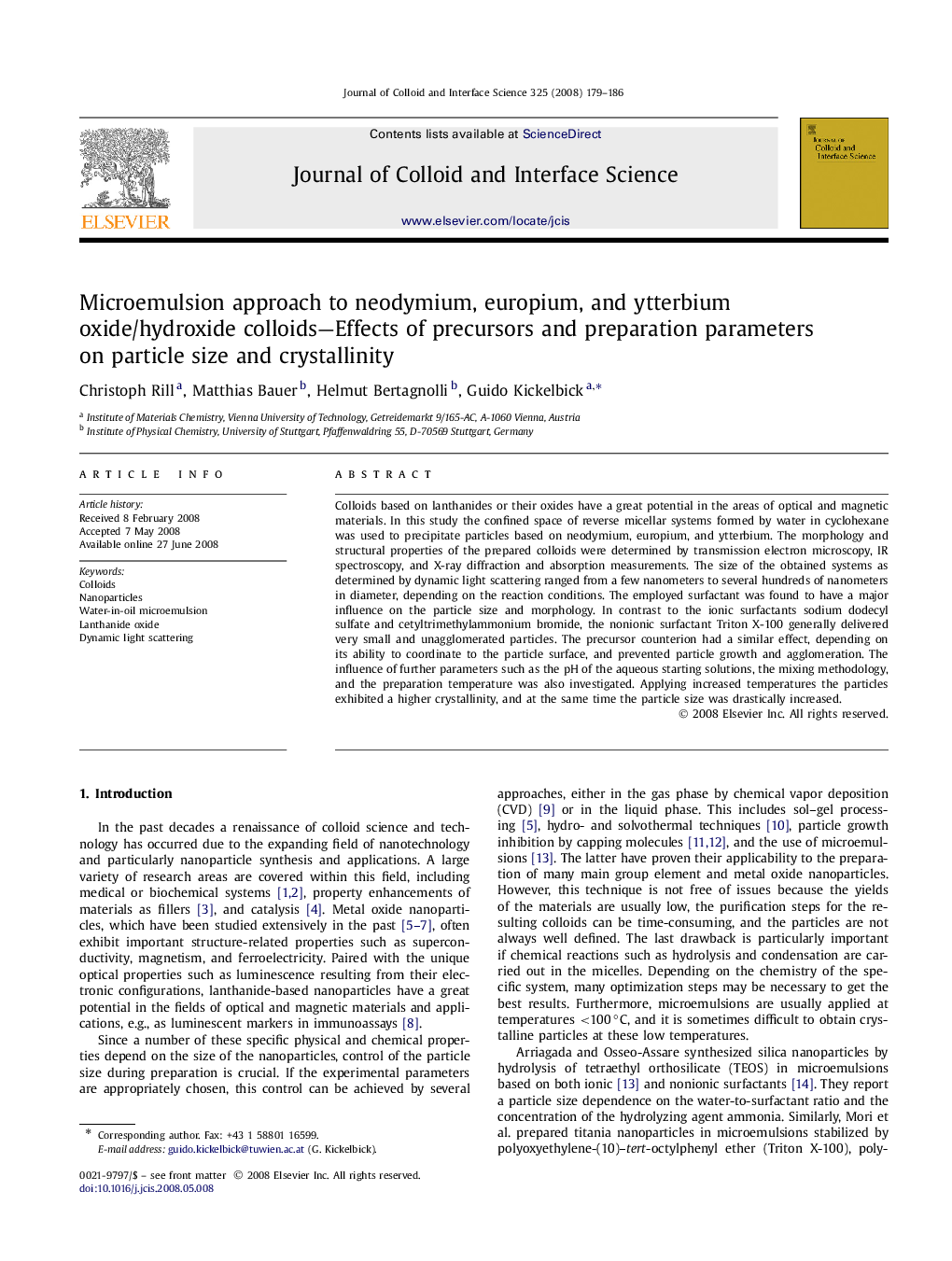| Article ID | Journal | Published Year | Pages | File Type |
|---|---|---|---|---|
| 611057 | Journal of Colloid and Interface Science | 2008 | 8 Pages |
Colloids based on lanthanides or their oxides have a great potential in the areas of optical and magnetic materials. In this study the confined space of reverse micellar systems formed by water in cyclohexane was used to precipitate particles based on neodymium, europium, and ytterbium. The morphology and structural properties of the prepared colloids were determined by transmission electron microscopy, IR spectroscopy, and X-ray diffraction and absorption measurements. The size of the obtained systems as determined by dynamic light scattering ranged from a few nanometers to several hundreds of nanometers in diameter, depending on the reaction conditions. The employed surfactant was found to have a major influence on the particle size and morphology. In contrast to the ionic surfactants sodium dodecyl sulfate and cetyltrimethylammonium bromide, the nonionic surfactant Triton X-100 generally delivered very small and unagglomerated particles. The precursor counterion had a similar effect, depending on its ability to coordinate to the particle surface, and prevented particle growth and agglomeration. The influence of further parameters such as the pH of the aqueous starting solutions, the mixing methodology, and the preparation temperature was also investigated. Applying increased temperatures the particles exhibited a higher crystallinity, and at the same time the particle size was drastically increased.
Graphical abstractVarious lanthanide salts were used as precursors for the precipitation of colloids in w/o microemulsions. A strong influence of the type of surfactant and counterion on the final particle size and morphology was observed.Figure optionsDownload full-size imageDownload as PowerPoint slide
